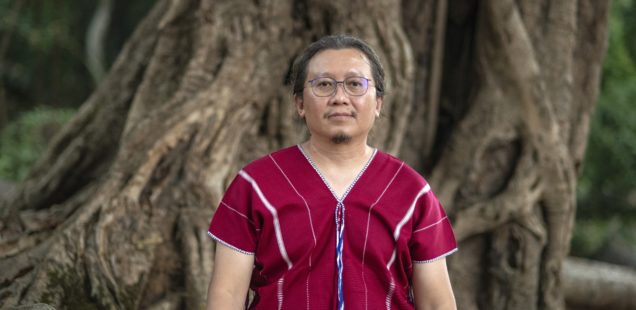
Congratulations to Paul Sein Twa – Executive Director of Salween Peace Park and friend of Saw O Moo, recipients of the 2018 Paul K. Feyerabend Award – who has now received the 2020 Goldman Award – the most important environmental award in the world.
The Board of the Paul K. Feyerabend Foundation is proud to congratulate Paul Sein Twa –elected President of the Salween Peace Park (SPP) and friend of Saw O Moo, recipients of the 2018 Paul K. Feyerabend Award. Paul has just received the most important environment award in the world: the Goldman Award exactly for his pivotal role in the development of the movement that declared and protects the Salween Peace Park.
Extract from his biography:
After World War II, the Karen people—one of eight major ethnic groups in Myanmar—sought an independent state, leading to a 70-year armed political conflict. Throughout the 1980s and 1990s, hundreds of thousands of Karen fled to refugee camps along the Thai border. Since 2015, there has been a nationwide ceasefire agreement in place, with tensions and occasional skirmishes replacing open hostilities.
Largely isolated due to years of conflict, the Salween River basin is both a major biodiversity zone and the home of the indigenous Karen people. The region has some of the last remaining intact wilderness areas in mainland Southeast Asia, including vast stretches of teak forests, tigers, endangered Sunda pangolins, clouded leopards, gibbons, Asiatic black bears, and sun bears. The Salween River—Asia’s longest free-flowing river—also runs through the territory.
Today, as resource-rich Myanmar transitions from military dictatorship to capitalist democracy, there has been an increase in logging, mining, agribusiness, dams, and rubber extraction in the area. In 1998, the Burmese government proposed the $2.6 billion, 1,360-megawatt Hatgyi dam in the southern Salween basin—in the heart of Karen territory.
Paul is an indigenous Karen who grew up along the Thai-Burmese border and has spent his life navigating the zones of conflict. He is deeply connected to the physical, spiritual, and cultural landscape of the Salween River basin, and has dedicated his life to preserving its land and traditions, which are deeply intertwined for the Karen people. In 2001, he co-founded the Karen Environmental and Social Action Network (KESAN) in order to protect the environment and culture of the Karen community.
In 2005, as industrial development increased in the region, Sein Twa began facilitating a community-driven approach to protect the Salween River basin, with support from local government and others. He attended international meetings to learn about various conservation approaches and learned about the peace park model. Rather than responding to each new project that appeared, he launched a proactive strategy of environmental protection and self-determination for his community. Peace parks—also known as transboundary protected areas—seek to preserve zones of biodiversity and cultural heritage using conservation to promote peacebuilding.
Sold on the concept of creating a peace park in their beloved Salween River basin, in 2016 Sein Twa and KESAN worked with Karen civil society and local government to mobilize Karen community support, holding public consultations, seminars, and educational meetings with 348 villages representing some 68,000 people.
In order to ensure community involvement throughout the process, Sein Twa worked with local leaders to organize a community referendum to approve a charter and governance structure, garnering 75% community support. He worked with the Karen Forest Department to replace colonial forestry principles with traditional practices and helped communities define borders using natural landmarks. Sein Twa and his team used GPS to map parcels and accurately record Karen ownership of land, and they documented biodiversity and conducted data analysis in the forests.
On December 18, 2018, the Karen people officially declared the creation of the Salween Peace Park, to be managed by local Karen communities. The huge park – more than half a million hectares – includes 27 community forests and three wildlife sanctuaries, protecting endangered populations of tigers, Sunda pangolins, black and sun bears, gaur, and hoolock gibbons, from extractive industries and development projects. The park’s borders were specifically designed to include proposed dam sites—including the Hatgyi dam—in efforts to stop destructive megaprojects.
In this still-volatile region, Sein Twa and KESAN are moving forward in assisting communities to develop land management plans, documenting biodiversity gains, and using the park as a bulwark against destructive megaprojects. Sein Twa is employing international environmental frameworks and collaborating with communities and local government to create peace and independence in the region. He is building a community-focused conservation zone with no boundaries between forest, wildlife, and indigenous communities. Sein Twa has ably combined grassroots environmental activism and indigenous self-determination to create the peace park in a conflict zone—a singular and unprecedented achievement. This is a major victory for peace and conservation in Myanmar.
Watch here the beautiful video that describes the justification of the Award and the inspiring acceptance speech by Paul:



